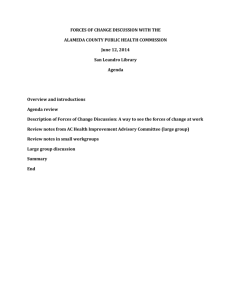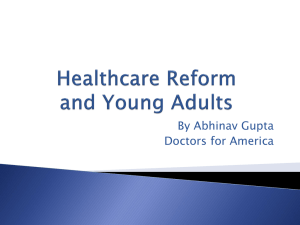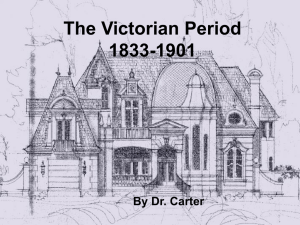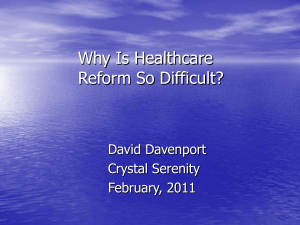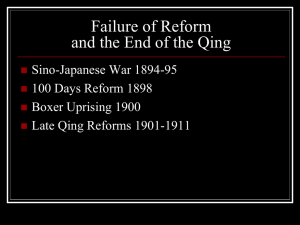Final PPT
advertisement
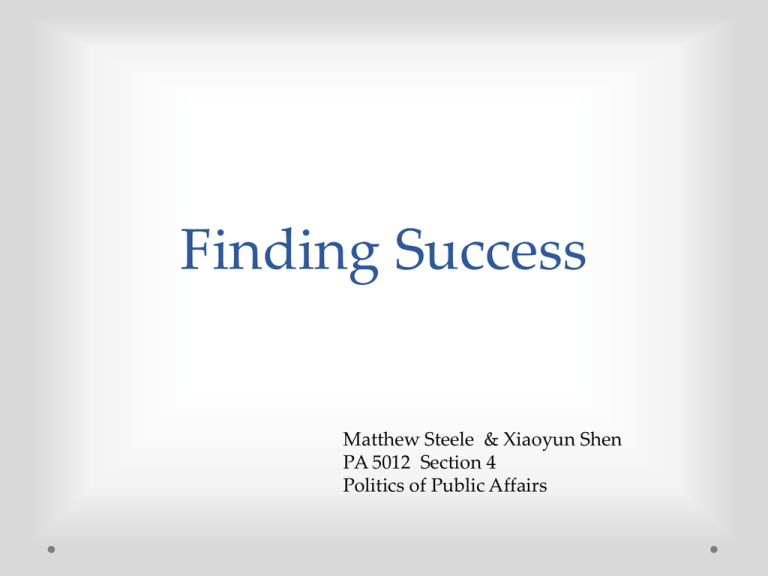
Finding Success Matthew Steele & Xiaoyun Shen PA 5012 Section 4 Politics of Public Affairs Outline Past--Tax Reform Act (TRA) of 1986 What is the Tax Reform Act of 1986 Important players / reasons for passage Demise and erosion of the TRA Current-- Affordable Care Act (ACA) What is the ACA Important players/ reasons for passage. Future fate of the ACA Recommendations and Questions Keys to Successful Reform “Political Fate of general interest reforms turns on the nature of the reactions, adaptations, coalitional patterns, and investments the reforms generate from social actors” – Patashnik 2008 --Keys to successful reform: Reconfigure political dynamic-• Realign public authority through shifting institutions • Generate positive feedback effects that are louder than negative feedback. • Significant economic impact on market forces • Absorb changes in the political environment. • Shifts in decision-making venues Previous Attempt at Tax Reform Tax preferences created complexities and gross inequities • 1962: Revenue Act of 1962 • 1969: Tax Reform Act of 1969 Pre-reform Environment • Tax breaks as a means to reward supporters • No enough political constraints on the creation of tax loopholes • Tax writing system was open to broader public participation • Indifferent public support for specific reform proposals Tax Reform Act of 1986 • As of 2012, it is the most recent major simplification of the tax code • Tax-revenue & distributional neutral • Broadened the tax base • Eliminated many tax shelters and other preferences Why Tax Reform Act of 1986 Passed • Skilled political entrepreneurs invested time and energy in the reform cause • Influential political leaders’ gave endorsement • Willingness of two parties to make political concessions and grant rewards • Congressional leaders held the reform coalition together • Interest group influence Demise and Erosion of TRA • The tax base narrowed • Tax rates were raised • A host of new breaks were created • New corporate tax shelters engendered Demise and Erosion of TRA • Coalition collapsed: Key players gone from power • TRA failed to shift institutions: Failed to raise government’s transaction costs Authority remained in the hands of congress • Interest groups: Failed to generate positive feedback effects • Changes in the political environment: Failed to solve a deep partisan ideological conflict • Economic impact on market forces: In general, overall economic impact was minimal ACA Pre-Reform Environment •Numerous attempts at reform in 20th century •Major health care reform for low-income and old-age citizens. •“Working Poor” increasingly grew as demographic without insurance (Gruber, 2013) •General public not clamoring for reform ACA Pre-Reform Environment •President Obama makes it a pillar of his agenda in his first term (Karch, 2013) •Unified Democratic control of Legislative and Executive Branches •Interest groups open to reform (AMA, pharmaceutical industries, etc.) Why ACA Passed • Mostly through parliamentary measures • Main focus of Act on financial reforms (i.e. reduce deficit in long term) • Key concessions were made (no single-payer option, removal of pork) • Reinforced market forces Will ACA Fail? •Most controversial element, individual mandate, has withstood legal challenges •Political feedback from interest groups is generally positive, especially amongst those that would perceive law to be negative •Is seen as a moderate step in the right direction •Much of the implementation of the ACA is at a state level Will ACA Fail? •Both Democrat and Republican elected officials displeased with ACA •Many remaining implementation questions •Not necessarily a realignment of existing partisan structures •Ability to change law entirely in the hands of Congress and the President •No immediate sunk costs Recommendations • Supportive interest groups help prevent reform failure by promoting the legislation and its impact through various media outlets and its own networks (Kingdon) • Increase cost-effective research and limit costsharing for only proven cost effective services (i.e. preventive care) Questions for Consideration Are there other factors that are key to sustainable reform that were not mentioned in this week’s readings? Will the ACA remain a sustainable reform in the long-term? Why?
